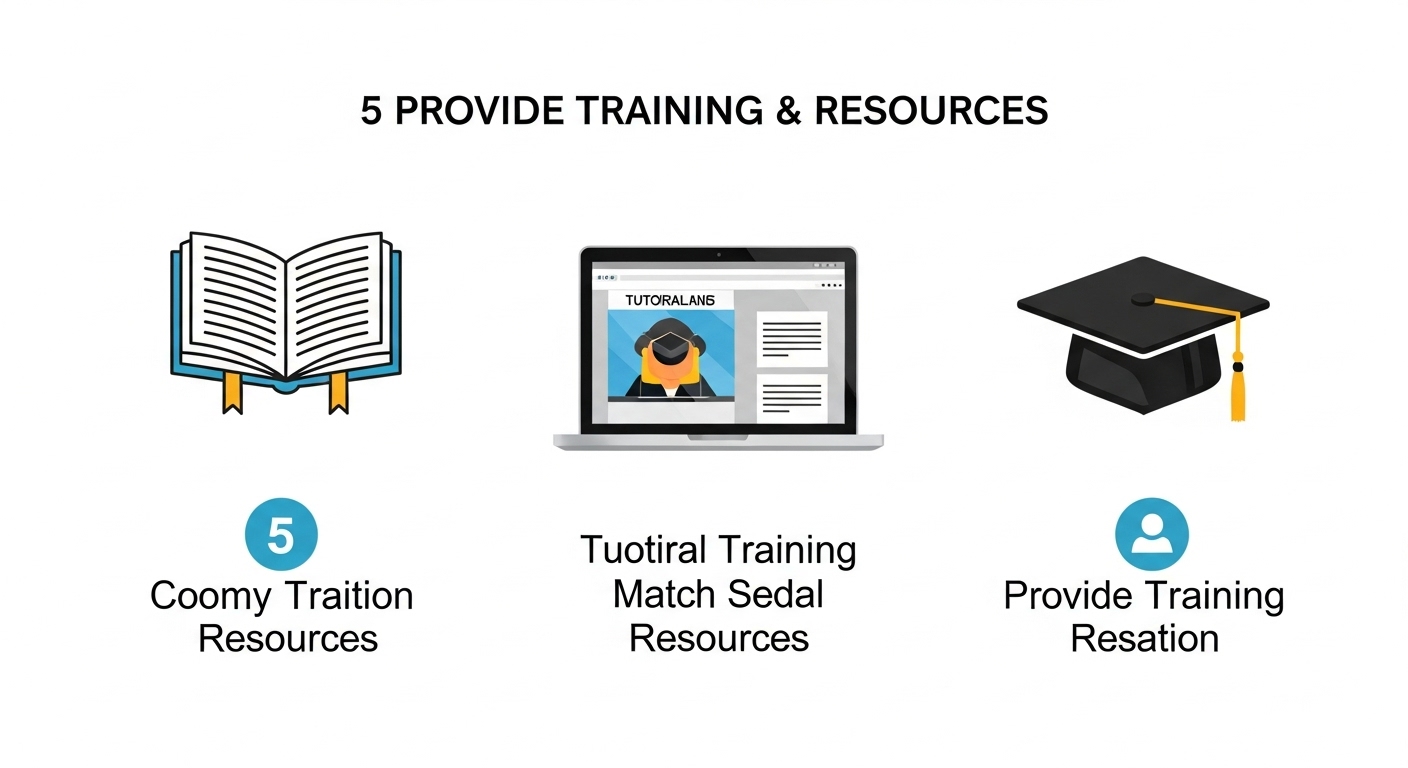Did you know what’s an essential need for business engines to keep running? Smooth talking. It’s so clear and well-known, yet many firms still rely on lengthy emails and scattered chats that never reach everyone. The good news? Modern internal communication platforms for companies can pull every voice into one clear channel—if you set them up the right way.
By the end, you’ll understand how to turn messy messages into a steady flow of ideas, feedback, and results.
1. Start With a Clear Communication Map
Grab a notebook and ask yourself these questions before opening a demo:
- Who talks to whom? Do frontline workers reach managers, or does everything funnel through supervisors?
- What tools are in play?
- Slack
- Notice boards
- Walkie‑talkies
- Zoom calls.
- Where are the obstacles? You have to think of missed memos, slow approvals, or rumors that spread faster than facts.
A communication map reveals weak points that the right internal communication platform for companies must fix. It also shows what’s working, so you avoid replacing good habits with clunky ones.
2. Set Goals Your Team Cares About
“Better communication” sounds nice, but it won’t excite anyone or secure a budget. Instead, translate improvement into clear numbers and everyday wins. For example:
- Faster decisions. Reduce project‑approval email chains from five messages to two so product changes roll out a week sooner.
- Higher engagement. Aim for at least 75 percent of staff to read the weekly CEO note and react with a thumbs‑up or quick comment.
- Stronger culture. Encourage peer recognition until every employee posts or receives at least three shout‑outs a month, lowering turnover by five percent.
When goals sound specific and human, they motivate. Tie each one to benefits that staff feel—less waiting, more praise, fewer headaches. This link primes everyone to welcome a new platform rather than dread another login.
3. Choose the Right Platform Features
Different tools shine in different ways. Keep your goals nearby and weigh features that matter most.
3.1 Rich Media and File Sharing
Images, videos, and quick polls beat walls of text. Look for drag‑and‑drop upload, built‑in editing, and searchable archives so files never vanish into personal drives.
3.2 Real‑Time Translation
If your teams span countries, auto‑translate bridges language gaps. The best systems let users tweak translations so jokes land and jargon stays clear.
3.3 Threaded Conversations
Linear chat scrolls bury topics. Threads keep projects tidy, helping teammates jump in without re‑reading fifty replies.
3.4 Strong Integrations
A platform that links with your calendar, CRM, or project board avoids double entry. Ask vendors about open APIs and off‑the‑shelf connectors.
3.5 Enterprise‑Grade Security
End‑to‑end encryption plus role‑based access controls protect trade secrets and personal data. Following the GDPR, HIPAA, or other regional laws may be non‑negotiable for your industry.
4. Build a Pilot Team and Test in the Wild
Rollouts die when IT pushes a tool that leaders ignore. Instead:
- Pick a cross‑section pilot group—customer service, field techs, HR, and execs all included.
- Run a 30‑day test covering normal days and stressful periods like product launches or peak seasons.
- Collect feedback weekly on ease of use, bugs, and success stories.
If the platform can’t win over this mixed crowd, it won’t win companywide. But when the pilot group loves it, they become cheerleaders for launch day.
5. Craft a Simple Adoption Plan
Fancy features flop without clear rollout steps. Follow this blueprint:
5.1 Executive Endorsement
Record a short video from the CEO explaining why the shift matters. When bosses walk the talk, staff follow.
5.2 Hands‑On Training
Skip two‑hour slide decks. Offer ten‑minute micro‑lessons that show one task at a time: posting updates, reacting with emojis, starting a project group. Include mobile and desktop steps.
5.3 Buddy System
Pair tech‑savvy employees with those who dread new apps. Quick desk visits or video calls solve doubts faster than ticket queues.
5.4 Visible Wins
Share early wins on the platform itself—“Inventory team found a new supplier in two hours thanks to real‑time chat!” Small successes encourage late adopters to get involved.
6. Promoting Open Feedback Culture
Optimization never ends. Encourage staff to speak up when something feels off by using:
- In‑app surveys that pop up after big updates or once each month.
- Suggestion channels where anyone can pitch ideas, while managers promise a response within 24 hours.
- Ask‑Me‑Anything sessions, so policy changes don’t breed rumors.
When employees see fixes happen quickly, trust grows, and your internal communication platforms for companies evolve with real needs, not guesses.
7. Use Data to Refine and Celebrate
Modern platforms show dashboards: message open rates, active users, and response times. Tie these numbers back to your original goals.
- Open rate stuck at 40 percent? Test different headlines or send times.
- Low mobile use? Field staff may need stronger Wi‑Fi or a lighter app.
- Recognition posts climbing? Celebrate publicly; culture is improving!
Every quarter, share a one‑page progress note. Transparency turns data into team pride rather than surveillance.
8. Blend Asynchronous and Synchronous Channels
Not every chat must be live. Blend methods to respect focus time:
- Asynchronous updates like news feeds, project threads, or recorded video briefings are perfect across time zones.
- Synchronous moments like live calls or town halls for sensitive topics that need real‑time back‑and‑forth.
Clear labels—Urgent, FYI, End‑of‑Day—set expectations and curb the “always on” trap that burns people out.
9. Support Remote and Hybrid Teams
Your internal communication platform for companies should level the field between office and remote staff.
- Virtual watercoolers for photos, hobbies, or Friday trivia keep bonds strong.
- Meeting recordings with AI summaries let absent teammates catch key points fast.
- Time‑zone indicators next to names reduce off‑hour pings.
When distance disappears, talent pools widen and retention rises.
10. Keep Security and Compliance Front and Center
A single leak can undo years of trust. Build habits such as:
- Mandatory two‑factor authentication for all accounts.
- Least‑privilege access so people see only what they need.
- Regular audits to remove inactive users and spot suspicious downloads.
- Clear offboarding steps that auto‑revoke accounts the instant someone leaves.
Your platform partner should offer audit logs and compliance reports, saving legal teams countless hours.
11. Plan for Future Growth
Needs change—mergers, new markets, product lines. Select tools that scale without major rewrites.
- Modular add‑ons let you bolt on video rooms or task boards later.
- Language packs spin up new locales with a single click.
- Flexible pricing adjusts to head‑count shifts without painful renegotiations.
A forward‑thinking approach guards against outgrowing your internal communication platform for companies within two years.
12. Real‑World Success Stories
GreenLeaf Logistics
Problem – Drivers felt siloed, and dispatchers relied on phone calls that clogged lines.
Solution – Launched a mobile‑first platform with voice‑to‑text chat.
Outcome – Response time to route changes dropped from twenty minutes to five, saving twelve hours of fuel each week.
BrightWave Marketing Agency
Problem – Remote creatives missed hallway brainstorming, slowing project flow.
Solution – Added “Idea Lounge” channels with pinned whiteboard templates.
Outcome – New campaign concepts rose thirty percent quarter over quarter, and employee net‑promoter scores jumped.
13. Common Mistakes and How to Avoid Them
- Tool overload – Replacing email with five new apps multiplies noise. Centralize them.
- Top‑down control – If only managers post, staff lurk. Encourage bottom‑up sharing.
- Neglecting accessibility – Make sure screen readers work and videos have captions. Inclusion is non‑negotiable.
- Ignoring culture fit – A flashy interface won’t fix a blame culture. Pair tech with training on respectful dialogue.
Knowing these traps keeps you from repeating mistakes others paid for.
14. Final Checklist for Optimization
- Map communication flows and pain points.
- Align goals with measurable metrics.
- Select a secure, integrated platform that matches needs.
- Pilot with a diverse test group.
- Roll out with leadership backing and bite-sized training.
- Gather feedback, refine features, and share results.
- Plan for scale, hybrid work, and continuous improvement.
Complete every step, and your internal communication platforms for companies will shift from “just another tool” to the heartbeat of daily operations.
Closing Thoughts
Great internal dialogue isn’t luck; it’s design. By choosing the right tools, backing them with clear goals, and nurturing a culture of open feedback, any organization can replace confusion with clarity. Your employees gain voice and vision, your customers feel the difference through faster service, and your company moves in one united direction—forward.
Invest the time now, follow the steps in this guide, and watch how optimized internal communication platforms for companies turn scattered teams into a single, unstoppable force.










